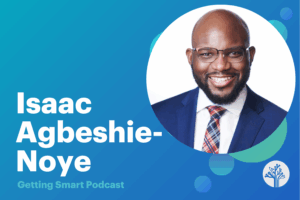Good Work: Considering Life in Cities

Fred Wilson featured this video of physicist Geoffrey West talking about cities, networks, and growth curves. Dr. West is past president of the Santa Fe Institute, a place where “researchers are exploring some of the world’s most intriguing questions.”
West notes that most folks live in cities. The U.S. is about 80% urbanized. Every week until 2050, more than one million people move into the world’s cities.
Cities “are the vacuum cleaners, the magnets, for creative people, for creating wealth.” They also collect a lot of bad stuff and haven’t received, West argues, sufficient scientific study. For nearly a decade, he hass been collecting data and building a scientific theory of cities with the goal of creating a useful predictive framework. Dr. West is captivated by two questions. “Are cities and companies part of biology?” And, “Why do all companies die where almost all cities survive?”
He observed that cities are just a physical manifestation of our interactions and clustering of individuals. Scaling of cities is the same as biology. He found economies of scale—in mammals and cities—the bigger you get the less energy you need. Cities offer about a 15% savings on infrastructure.
In a NYT profile, West describes what makes a city more resilient than a corporation, “Think about how powerless a mayor is. They can’t tell people where to live or what to do or who to talk to. Cities can’t be managed, and that’s what keeps them so vibrant. They’re just these insane masses of people, bumping into each other and maybe sharing an idea or two. It’s the freedom of the city that keeps it alive.”
I’ve suggested that there are three kinds of people captivated by their work, they are inhabited with a gift, inspired by a vision, or captured by a calling. West (and many of his colleagues at SFI) appears to be part of a subset of the third—following a big question. I appreciate his decade long exploration of the urbanization of the planet.
In Discovery profile, West offers this cautionary note, “I believe that part of what has made life on Earth so unbelievably resilient—able to evolve and survive across billions of years—is the fact that its growth is generally sublinear, with the exponents smaller than 1. Because of that, organisms evolve over generations rather than within their own lifetimes, and such gradual change is incredibly stable. But human population growth and our use of resources are both growing superlinearly, and that is potentially unstable.”
My take: the only way to encourage more smart choices is to create more smart cities—cities with high degrees of literacy, an informed dialog, and schools that connect young people to the idea economy. That’s why I’ve launched a weekly Smart Cities series to profile at least three dozen of the metropolitan areas in the U.S. I’m interested in
- How and where do learning innovations happen?
- How do innovations spread vertically up and down the learning stack?
- How and why do ideas and innovations spread from place to place?
I’m planning to allow these questions to guide some of my learning in 2013. My hypothesis is that we have an innovation problem—an inadequate commitment to learning R&D and a sector with weak innovation diffusion. Given the downside of the superlinear trends West has spotted, we need Smart Cities as soon as possible.
We look forward to another year of Getting Smart and celebrating your contributions to learning.








Keishla Ceaser-Jones
"In Discovery profile, West offers this cautionary note, “I believe that part of what has made life on Earth so unbelievably resilient—able to evolve and survive across billions of years—is the fact that its growth is generally sublinear, with the exponents smaller than 1. Because of that, organisms evolve over generations rather than within their own lifetimes, and such gradual change is incredibly stable. But human population growth and our use of resources are both growing superlinearly, and that is potentially unstable.”
This is an incredibly fascinating idea. I was thinking today how we live in a time of incredible innovation and access to information, and yet, in some spaces there is a backlash against this movement. In some ways, I feel as if we are descending into a self-imposed Dark Ages. We have multi-generational forces pushing both towards openness and tradition, rejections of medicine and science, and efforts to rollback civil advancements. Have we evolved too quickly? Interesting.